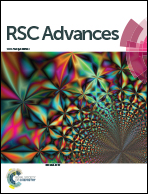Variability of heavy metal content in soils of typical Tibetan grasslands †
Abstract
Relatively high contents of heavy metals were recently reported in the high-altitude Tibetan Plateau (TP) environment, but the source and distribution characteristics of heavy metals in grassland environments of the TP remain unclear. Here, we report the contents of Hg, Cd, As, Pb, Ni, Cr, Cu, and Zn in soils of typical grasslands from the western to eastern parts of the TP, and the factors regulating accumulation of these heavy metals in the soil. Results show a large degree of variability of the eight heavy metals in the topsoil (0–20 cm) of different grasslands of the TP. Distribution characteristics of the heavy metals in the subsoil (20–40 cm) from the different grasslands were similar to those in the topsoil. Concentrations of As, Cd, Cu, and Zn in grassland soil tended to decrease as longitude increased, whereas Hg content displayed an increasing trend with increasing longitude after 88°E. These observations may be related to different sources of the heavy metals in the soils. Our results suggest that Cu, Zn, Cr, Cd, Ni, and As were mainly derived from natural sources, whereas anthropogenic activities could be responsible for the accumulation of Pb and Hg in the soil. Positive correlation between average annual rainfall amounts and soil Hg content may suggest the contribution of precipitation to soil Hg content. However, accumulation and distribution of heavy metals in the grasslands also depend on soil characteristics which could influence the mobility of heavy metals. These findings have important implications for an understanding of the occurrence and accumulation of soil heavy metals in grasslands of high-altitude environments.


 Please wait while we load your content...
Please wait while we load your content...